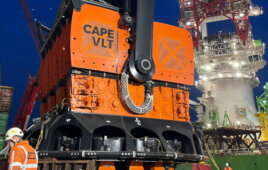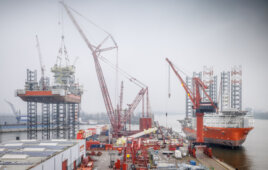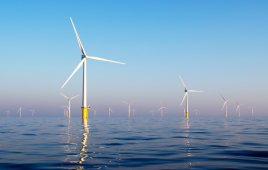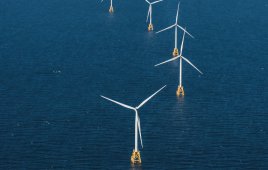
RWE npower renewables operates 23 wind farms in the UK. The company uses two Triton units to profile wind speed, direction, shear, and other variables at existing and prospective wind power sites.
One of the UK’s biggest renewable energy companies is using Second Wind’s Triton Sonic Wind Profiler to evaluate wind farm sites and position wind turbines for maximum productivity and profitability. Triton, a remote sensing system, uses sodar (sound detection and ranging) technology to measure wind at greater heights than the previous tower-based standard. Triton’s compact form, ease of deployment, low power requirements and reliability give wind power companies the versatility to streamline wind-farm developments.
Sodar will let the company forecast more confidently annual energy production by measuring wind at the heights covering the full rotor sweep of a commercial turbine, which yields the most accurate portrait of wind resources on a particular site.
“Used in conjunction with tower-mounted sensors, we expect the wind data will let us obtain better project financing terms,” says RWE npower renewables analyst Annabel Gammidge.
“Beyond project financing, we see the portability of the Triton system as an advantage. We can move them around our site to obtain a stronger characterization of the wind, rather than being stuck with the data from one hard-to-relocate tower,” says Gammidge.
Before deploying its first Sodar unit on a wind measurement campaign, RWE tested the unit against data collected from a 60-m met tower in northern England. The Triton and met tower data correlated well with a correlation coefficient of 0.986. There was a differential in average wind speed at 60 meters of less than 0.9%, and the Triton system demonstrated a reliability of 99.8%. The Triton performed as well as promised so RWE was able to move it to a wind farm development site in Wales that was under evaluation.
RWE npower renewables
www.npower-renewables.com
www.rweinnogy.com.
Second Wind
www.secondwind.com
Filed Under: News




